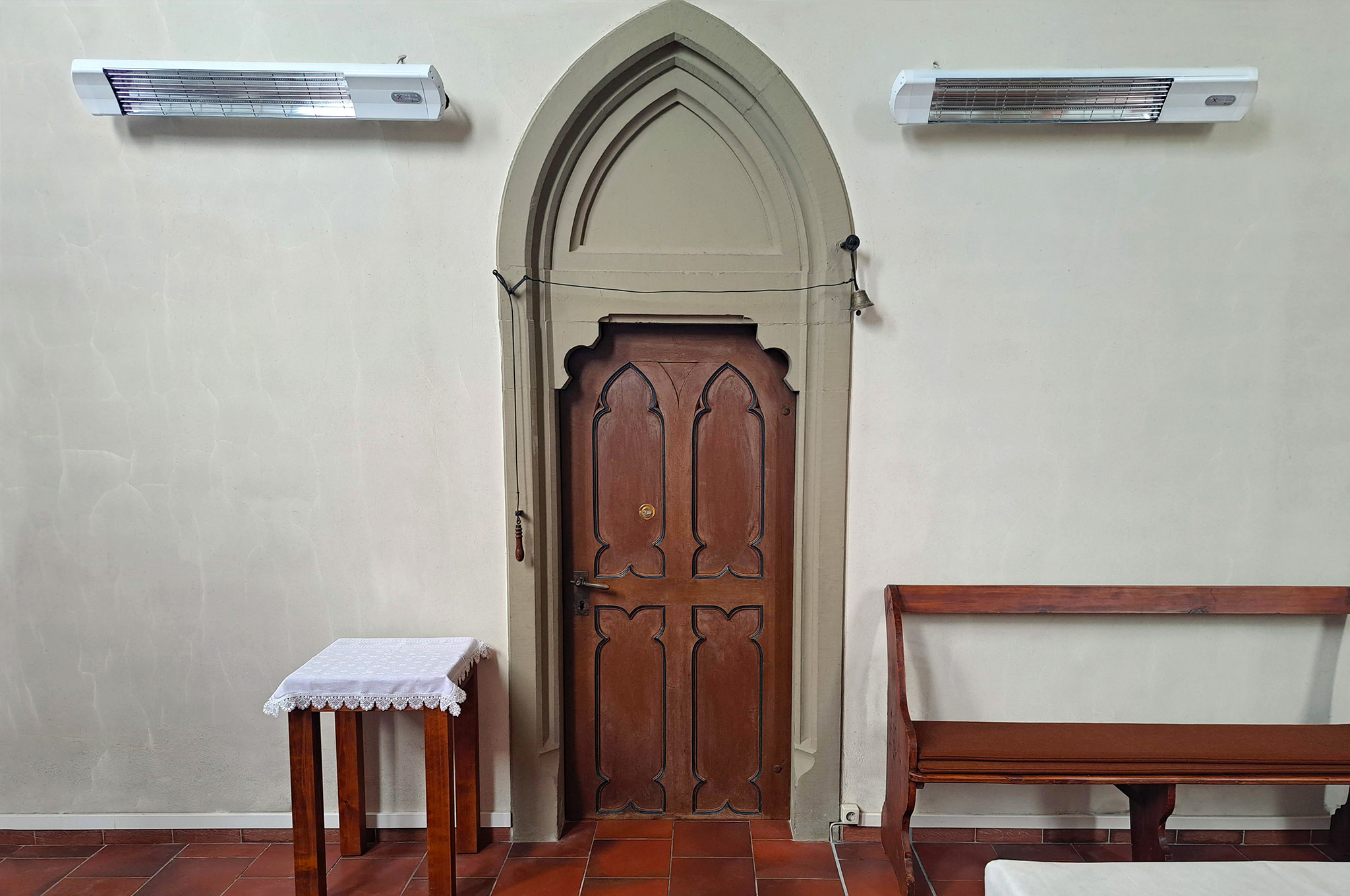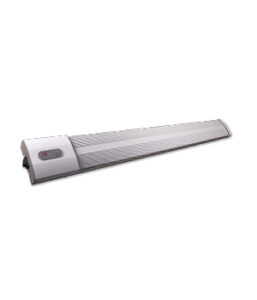Example of use: CHURCH AND MONUMENT PROTECTED BUILDINGS
Heat a church or listed building?
Churches and listed buildings are as diverse as their visitors. There are large, small, modern, very old, magnificent or simple churches. But one thing is common in all churches, as well as in listed buildings equally important – visitors do not want to freeze there. In addition, most heating systems in churches are now absolutely obsolete and must be replaced according to EnEv. Most of them also have no heating concept, no large number of visitors and the rising energy costs are also added!
Churches have special requirements compared to residential buildings. On the one hand, rules of monument protection apply here and, on the other hand, depending on the height, also other thermal conditions. The lowest base temperature should be min. 5-8 degrees and max. 13 degrees. For humidity, the optimum value is 45-65% and should be checked regularly by a thermo-hygrostat. Now, if you do heat in the winter, the temperature must rise only 1 degree per hour. Otherwise, when strongly heated room air comes into contact with cold surrounding walls or windows, drafts are created. These air currents also cause severe contamination of the entire church, especially when uncontrolled warm air heaters are used.
When heating distinguishes between two types. Space heating for the whole room and seat heating, which is concentrated only in the area where people are. With space heating systems such as the warm air heating, floor or wall heating and bench heating, there are long heating times and more energy costs are the result. A really good alternative here are seat heaters with infrared heating, the advantages of which outweigh the disadvantages. Of course, this also applies to all other listed buildings such as galleries, castles, palaces and museums.
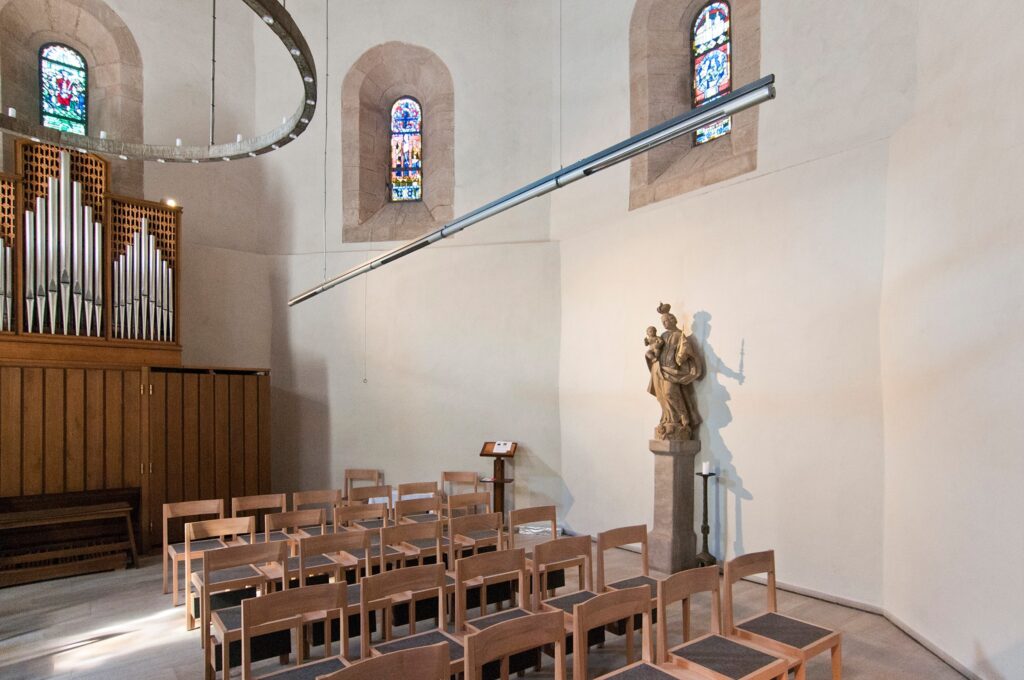
"Heating churches and energy efficiency are not opposites! This can be achieved with infrared heaters."
>> Christian Kalteis, Management & Sales, S.E. Systemelectronic GmbH
WHAT ARE THE PROBLEMS WITH INCORRECT HEATING?
Especially in winter, churches are heated a lot to keep the visitors. For this purpose, the heating is often turned up briefly and quickly before the service. So that it is nice and warm for the visitors, this kind of heating is even worse for the church or museums with their inventory! Since warm air always rises, the upper part of the church, where the organ is often located or where there are frescoes, is anyway even warmer than the lower part. The difference can be several degrees. Heating and ventilation failures in churches and listed buildings cause many costs. Especially the valuable inventory, such as the expensive organ, is very much damaged by this. This is because the predominant material used in organs is wood.
Since organic materials such as wood have a hygroscopic property, the temperature and humidity fluctuation has a huge impact on them. If the humidity is too high or too low, the organ may not only go out of tune, but may become completely silent or suffer a mold infestation.
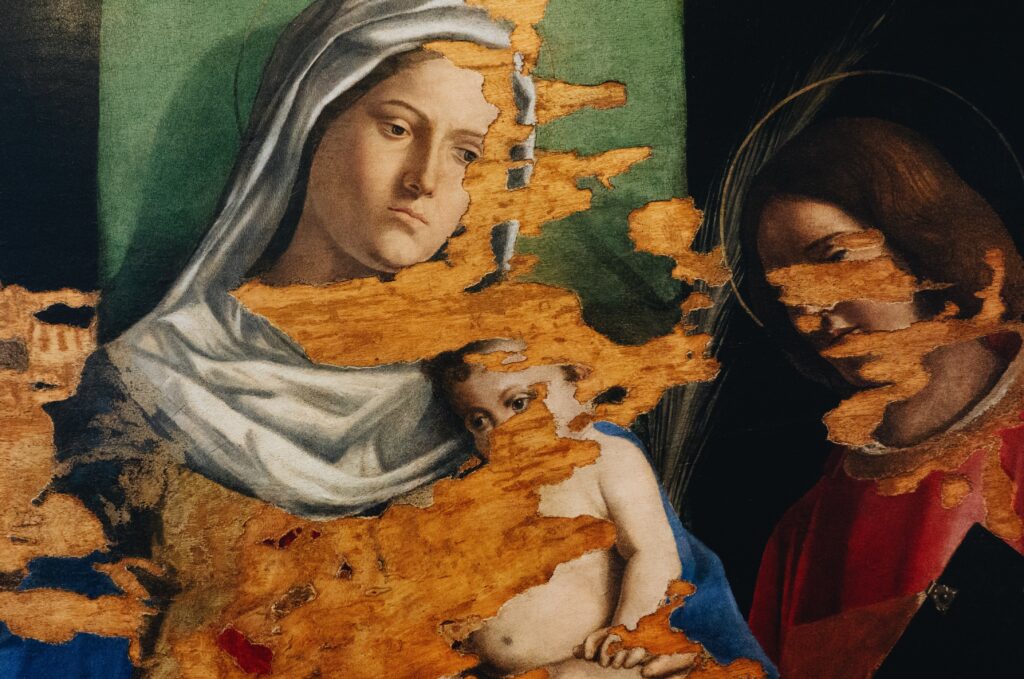
It also has serious consequences for the other art objects. Wooden altars, sacred figures, carvings, paintings and other art objects may have their paint peeling / discolored, cracked or may also suffer a fungal attack.
Especially in the case of paintings, this damage is particularly costly and time-consuming during restoration!
If a painting now lies directly on the wall, there is a permanent exchange between the colder and more humid air behind the painting and the warmer and drier air in the room. Figuratively speaking, there is a permanent draught of air through craquelure cracks in the primer, painting layer and overlays. This air flow provokes material movement and thus craquelé formation (cracking). The cracks are contaminated by entrained dust and become more prominent. The canvas degrades more.
For the masonry incorrect heating also has dire consequences. Since space heaters heat the air in the room itself, but not the walls, corners and floors, they remain cold. There, the warm and humid air settles on the cold surfaces. Mold is the result, the plaster surface crystallizes and, on top of that, cracks can develop here as well. All this results in high restoration costs.
How to heat churches with infrared heaters.
Churches are special – they are different from all other buildings, are listed and have special requirements. Therefore, heating is also subject to its own specific conditions.
Proper heating saves heating energy without compromising the thermal comfort of the people who attend the church. It has been proven that it would be best for the church with its inventory if the room is not heated, but only the visitors. This is achieved with infrared radiant heaters. Suspended above the pews of visitors or in the choir area, it warms selectively and does not need a long lead time. They are also perfectly suitable for parish halls, small halls, sacristies, vestibules and museums.
This type of heating uses the principle of the sun. Which heats the body with the help of infrared B-radiation, instead of the often used and harmful infrared A-radiation. This is perceived as a pleasant warmth
Let us advise you right away!
We will be happy to help you with all your needs or questions! As a manufacturer, we ourselves also often advise you on site or actively accompany your project with one of our 500 specialist dealers. You can reach us at:
Why should you choose our ExtremeLine products? What are the advantages?
With infrared heating from ExtremeLine you can save yourself up to 70% in costs. Our heaters are very powerful, can heat a lot of area with a small number of devices. They have a long service life and are comparatively cheap. Another advantage of radiant heaters is the low red light, compatibility for allergy sufferers. In addition, drafts and moisture are avoided and, unlike space heaters and the like, there is no chimney effect.
When thinking about heating in churches and historic buildings, you also have to consider historic preservation. Here it is important that the appearance of the church or historic building is not changed. Since our ExtremeLine infrared heaters are minimally invasive and blend in with their surroundings, the preservationists are happy! The devices can be mounted with joints or rope attachments. Also, the general installation effort is much less than other heaters. Thus, costs are saved again.
And there is another advantage. Our devices are manufactured in our production site in Halfing am Chiemsee and were also developed there. In addition, our products have a very high quality standard and low maintenance. However, if a carbon tube should break, you can easily replace it yourself. Our carbon tubes are much more robust and insensitive compared to the commercial gold tubes.

Matching products
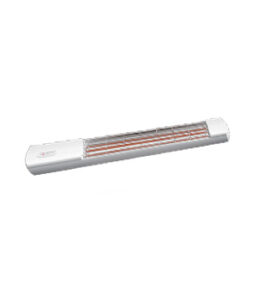
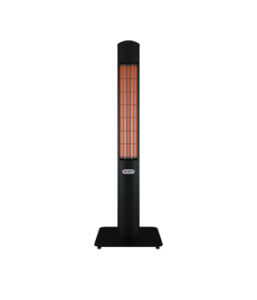
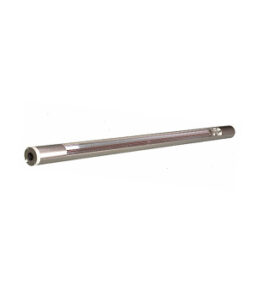
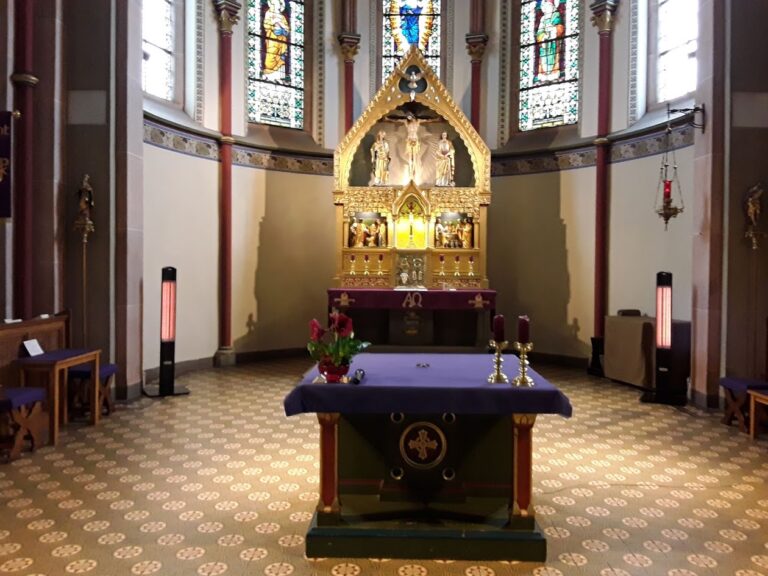
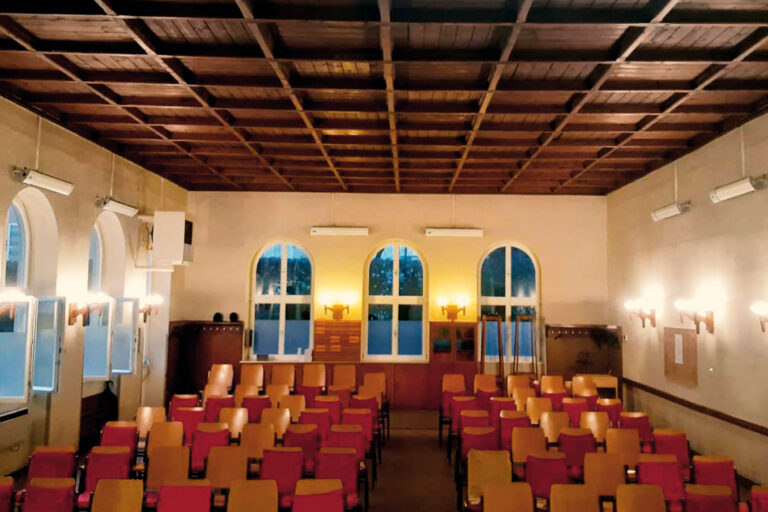
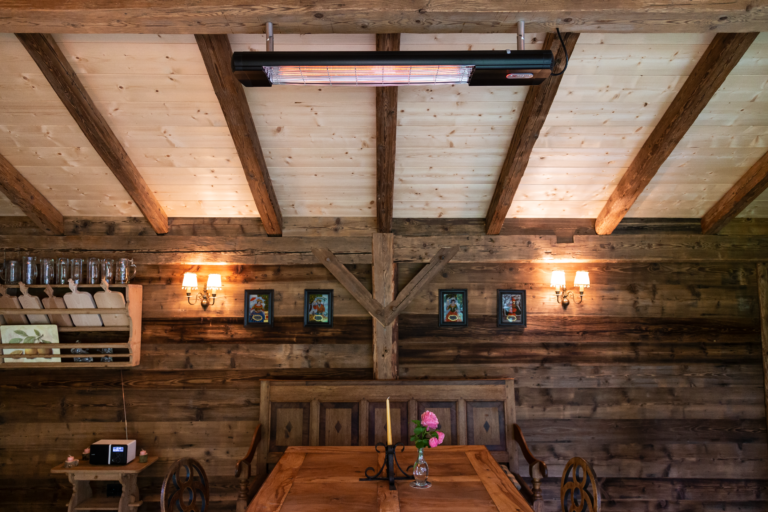
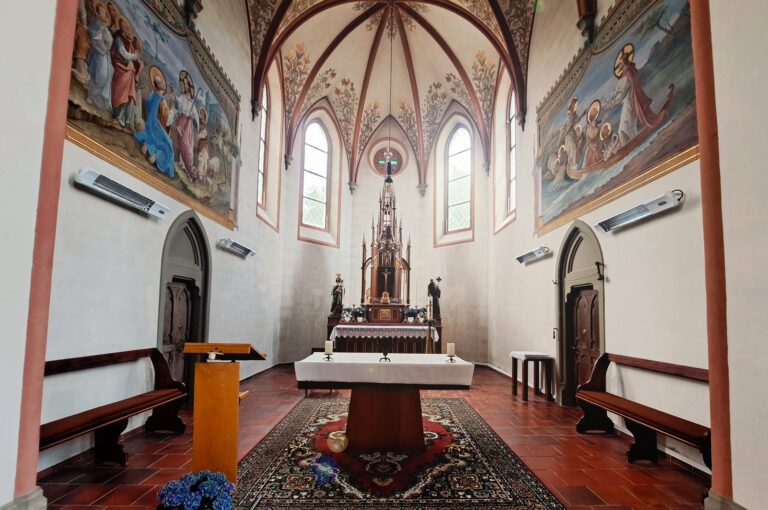
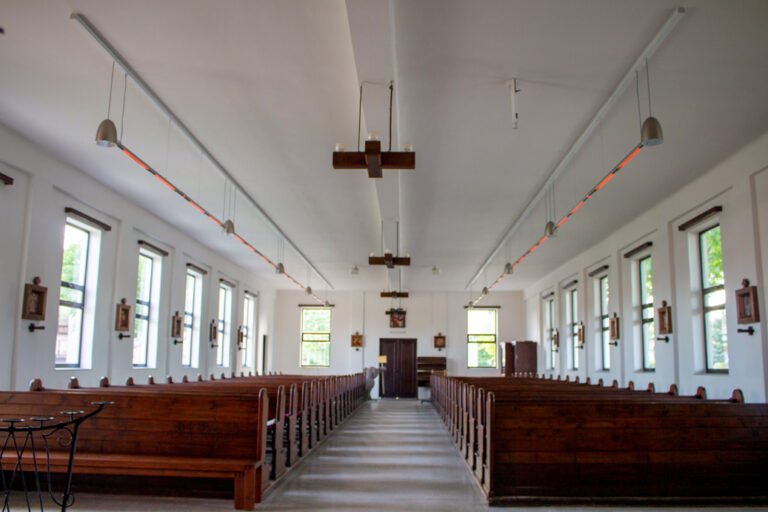
Some examples of our ExtremeLine products already actively used in public buildings:
- Achatius Chapel in Grünsfeld
- Open Air Museum Finsterau
- Flugfeldpfarre St. Anton – Church of the Archdiocese of Vienna
- Kavalierhaus Klessheim near Salzburg
- Hotel Taschenbergpalais Kempinski Dresden
- Redeemer Church Wiener Neustadt
- Open-air museums Massing and Finsterau

